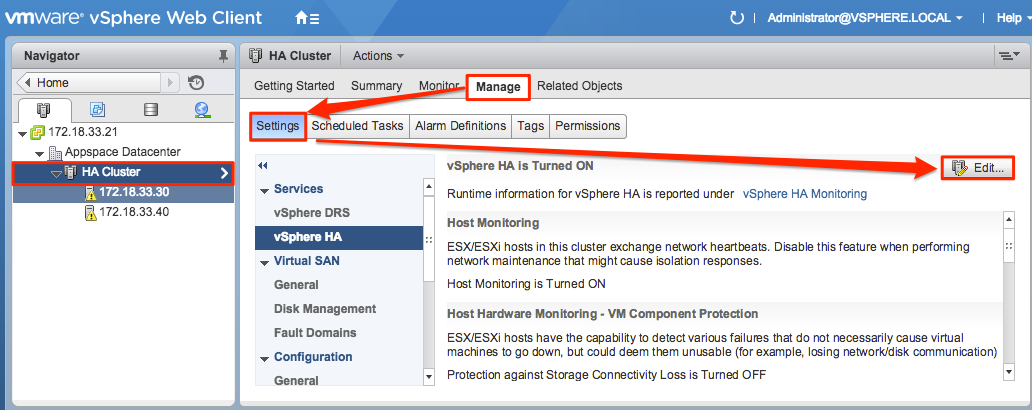Datastores in VMware vSphere are storage containers for files. They could be located on a local server hard drive or across the network on a SAN. Datastores hide the specifics of each storage device and provide a uniform model for storing virtual machine files. Datastores are used to hold virtual machine files, templates, and ISO images. Heartbeat Datastores: HA uses the datastore heartbeat when the host management network has failed. You can configure the datastore to be used for heartbeats. Advanced Options: Here you can configure the Advanced Options for High Availability. Configure this only if you have any specific requirement or advised by the VMware Support. Datastore is removed from the set of preferred heartbeat datastores selected for cluster because the datastore is removed from inventory. Causes Review the exact description to.
When the primary host in a VMware vSphere® High Availability cluster cannot communicate with a secondary host over the management network, the primary host uses datastore heartbeating to determine whether the secondary host has failed, is in a network partition, or is network isolated. If the secondary host has stopped datastore heartbeating, it is considered to have failed and its virtual machines are restarted elsewhere.
VMware vCenter Server® selects a preferred set of datastores for heartbeating. This selection is made to maximize the number of hosts that have access to a heartbeating datastore and minimize the likelihood that the datastores are backed by the same LUN or NFS server.
You can use the advanced option das.heartbeatdsperhost to change the number of heartbeat datastores selected by vCenter Server for each host. The default is two and the maximum valid value is five.

vSphere HA creates a directory at the root of each datastore that is used for both datastore heartbeating and for persisting the set of protected virtual machines. The name of the directory is .vSphere-HA. Do not delete or modify the files stored in this directory, because this can have an impact on operations. Because more than one cluster might use a datastore, subdirectories for this directory are created for each cluster. Root owns these directories and files and only root can read and write to them. The disk space used by vSphere HA depends on several factors including which VMFS version is in use and the number of hosts that use the datastore for heartbeating. With vmfs3, the maximum usage is 2GB and the typical usage is 3MB. With vmfs5, the maximum and typical usage is 3MB. vSphere HA use of the datastores adds negligible overhead and has no performance impact on other datastore operations.

vSphere HA limits the number of virtual machines that can have configuration files on a single datastore. See Configuration Maximums for updated limits. If you place more than this number of virtual machines on a datastore and power them on, vSphere HA protects virtual machines only up to the limit.



Vmware Datastore Heartbeat Disable
Vmware Heartbeat Datastore
Vmware Datastore Size Best Practice
